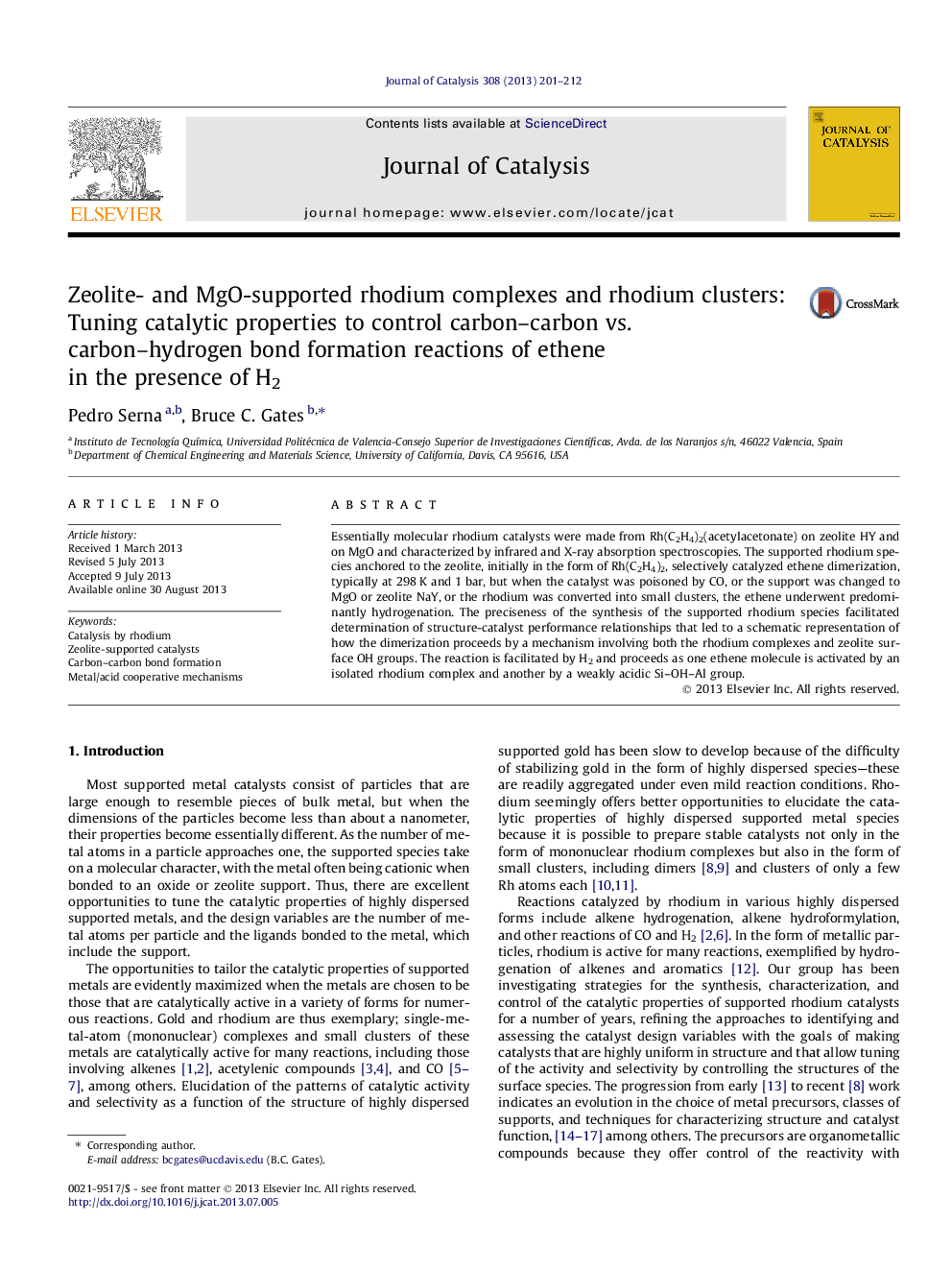| کد مقاله | کد نشریه | سال انتشار | مقاله انگلیسی | نسخه تمام متن |
|---|---|---|---|---|
| 61198 | 47569 | 2013 | 12 صفحه PDF | دانلود رایگان |

• Rhodium selectivity for ethene dimerization vs. hydrogenation precisely regulated.
• Selectivity tuned by reactivity of support and nuclearity of supported rhodium species.
• Dimerization occurs on rhodium complexes that cooperate with acidic sites of zeolites.
• High selectivity to butenes obtained in excess of H2 without need for halides.
• Rh clusters or Rh on supports lacking Brønsted acid sites selective for hydrogenation.
Essentially molecular rhodium catalysts were made from Rh(C2H4)2(acetylacetonate) on zeolite HY and on MgO and characterized by infrared and X-ray absorption spectroscopies. The supported rhodium species anchored to the zeolite, initially in the form of Rh(C2H4)2, selectively catalyzed ethene dimerization, typically at 298 K and 1 bar, but when the catalyst was poisoned by CO, or the support was changed to MgO or zeolite NaY, or the rhodium was converted into small clusters, the ethene underwent predominantly hydrogenation. The preciseness of the synthesis of the supported rhodium species facilitated determination of structure-catalyst performance relationships that led to a schematic representation of how the dimerization proceeds by a mechanism involving both the rhodium complexes and zeolite surface OH groups. The reaction is facilitated by H2 and proceeds as one ethene molecule is activated by an isolated rhodium complex and another by a weakly acidic Si–OH–Al group.
HY Zeolite-supported mononuclear rhodium complexes catalyze the dimerization of ethene in the presence of hydrogen. Hydrogenation of the C=C bond occurs, instead, if the rhodium complexes are supported on MgO or if a fraction of the rhodium on the zeolite is in the form of small clusters.Figure optionsDownload high-quality image (84 K)Download as PowerPoint slide
Journal: Journal of Catalysis - Volume 308, December 2013, Pages 201–212